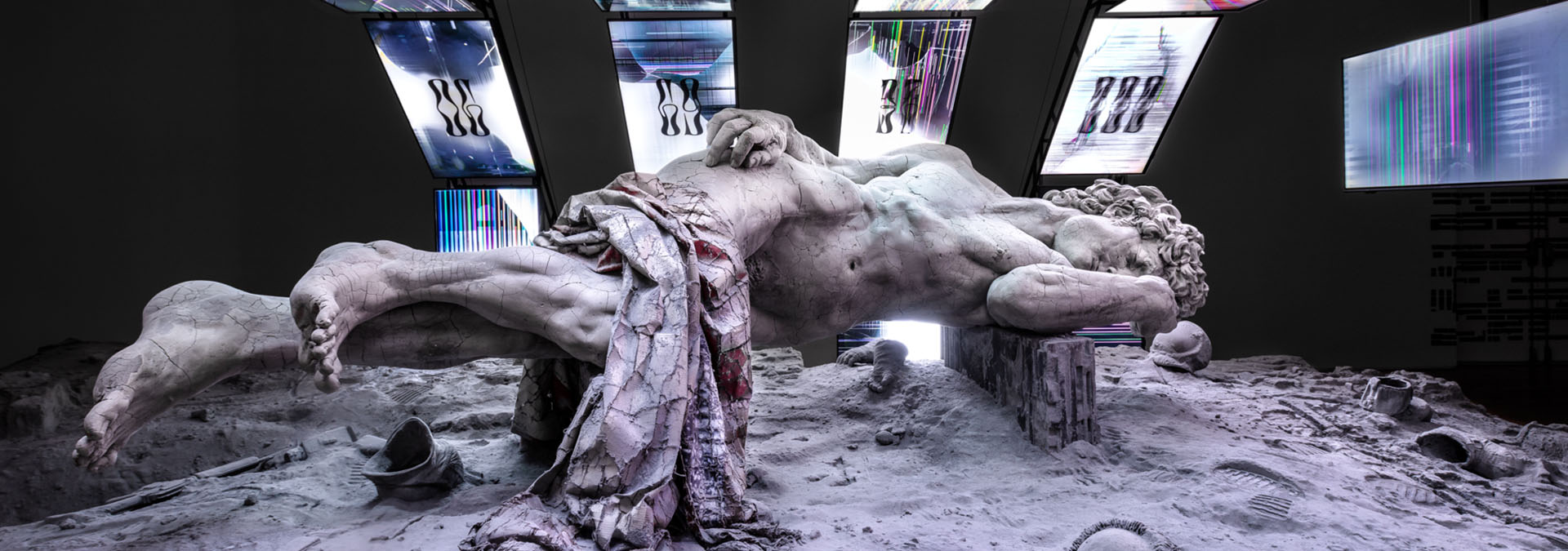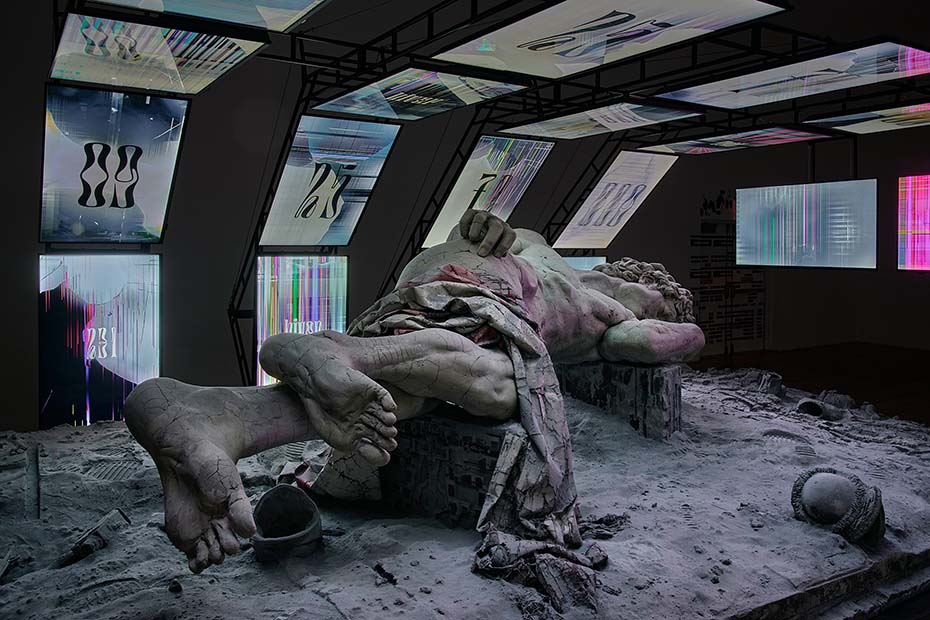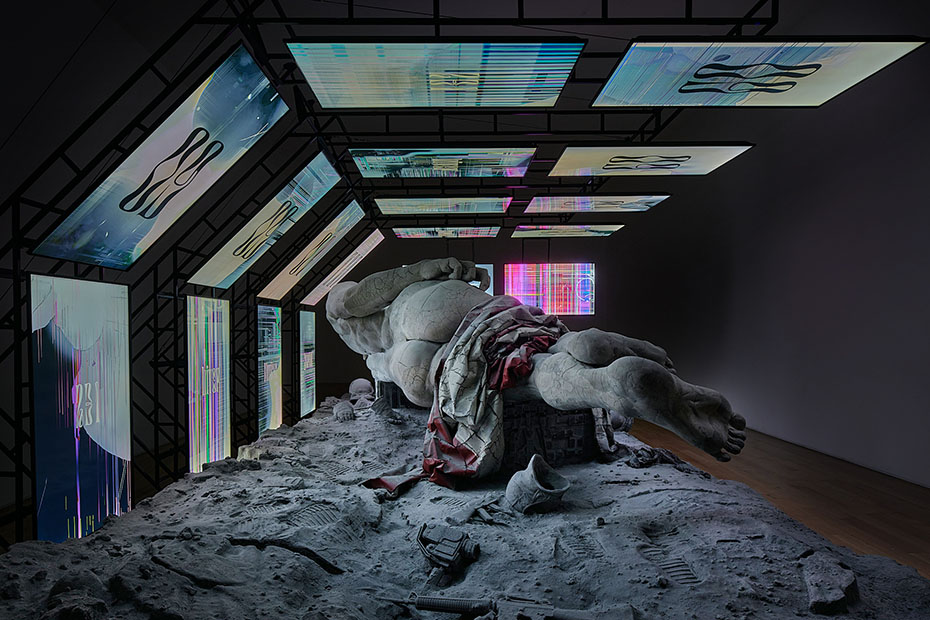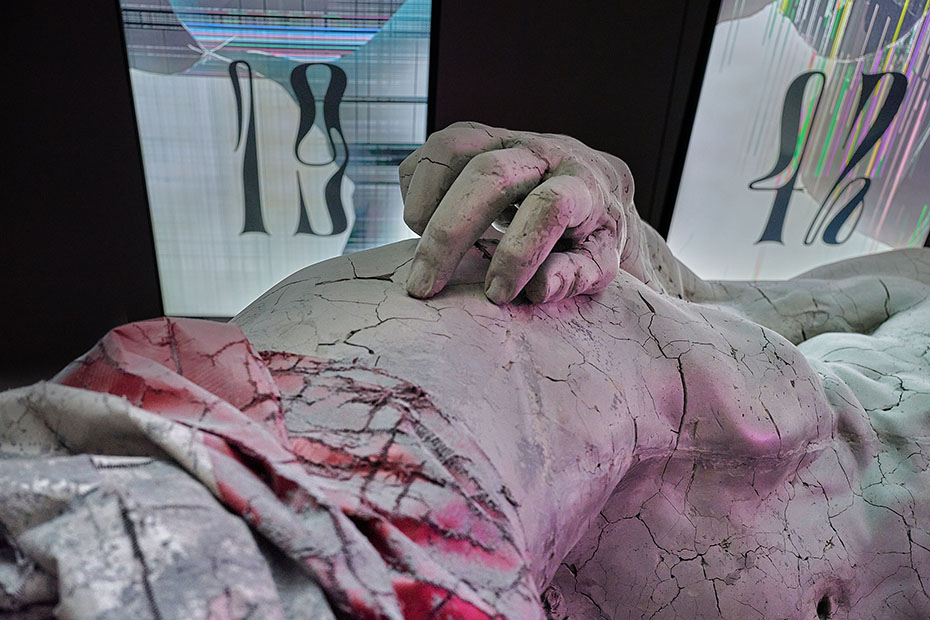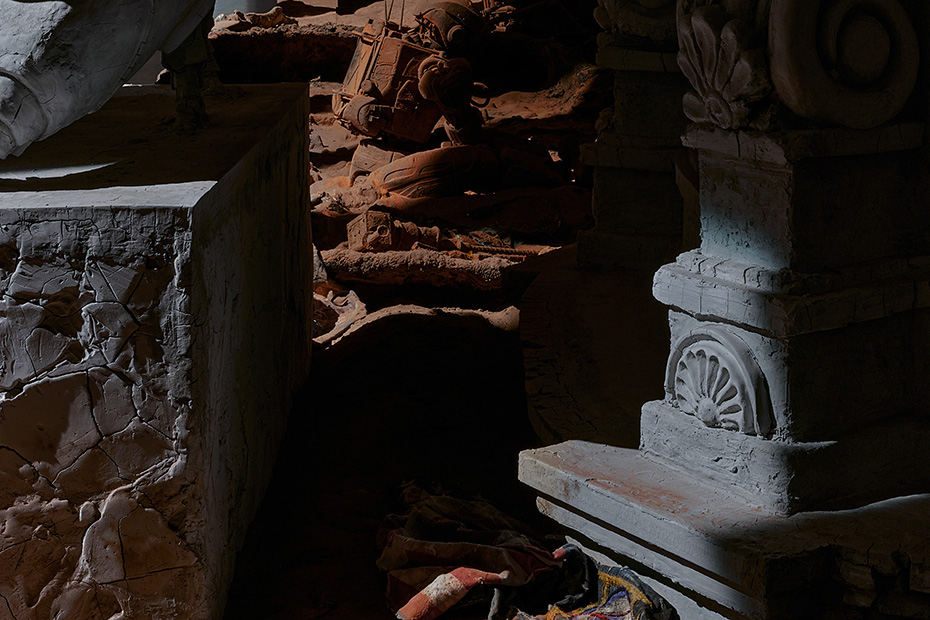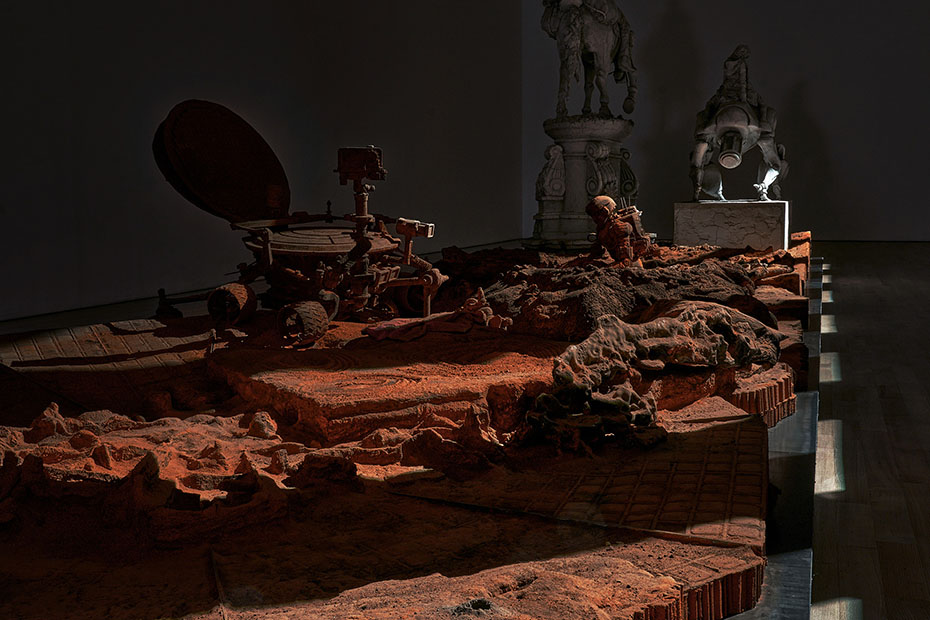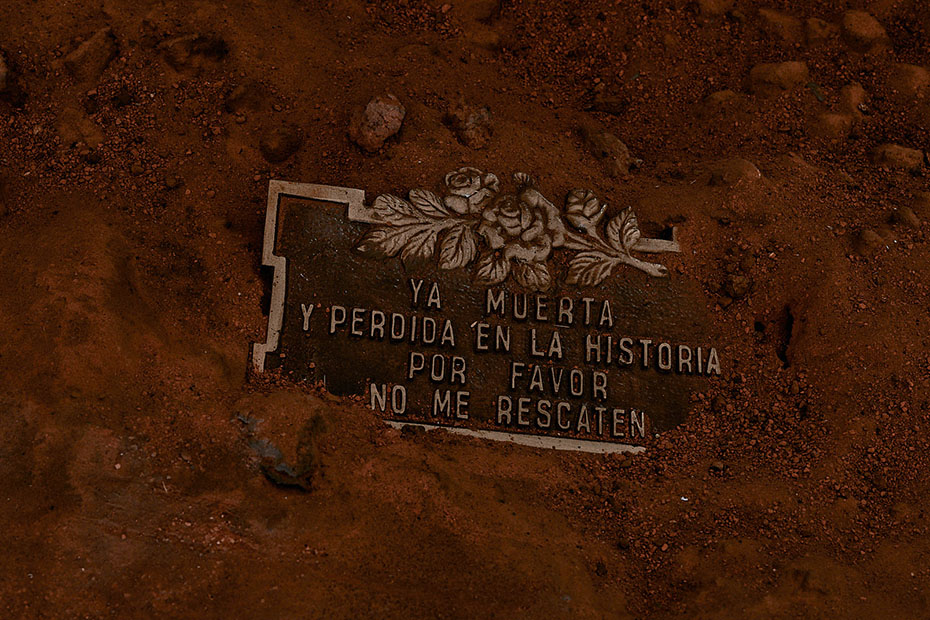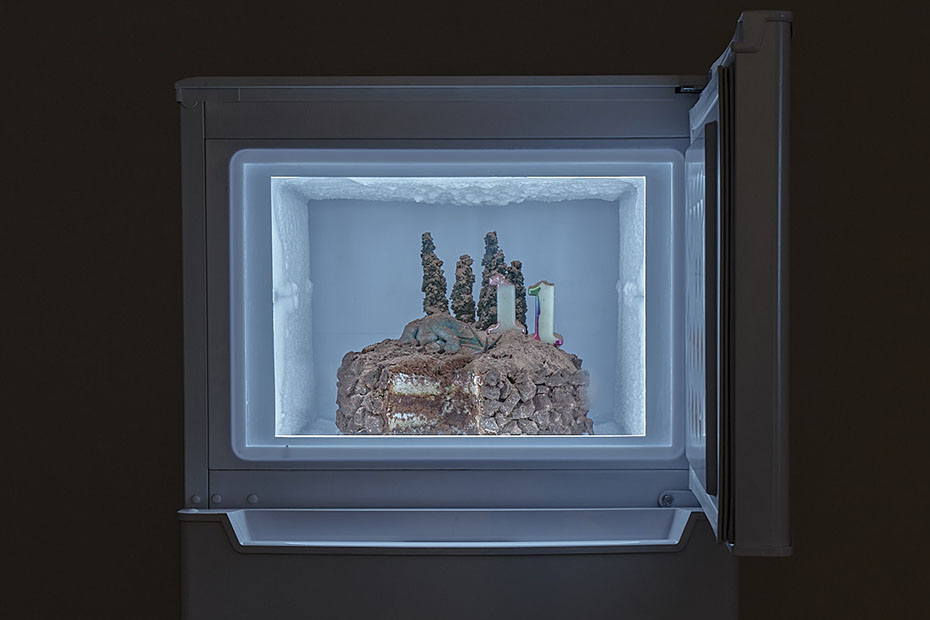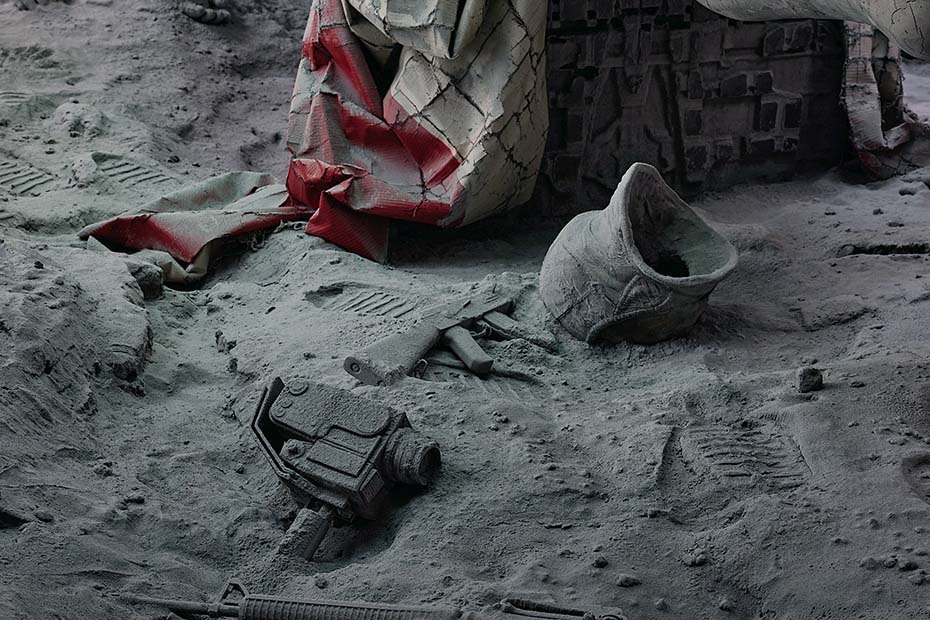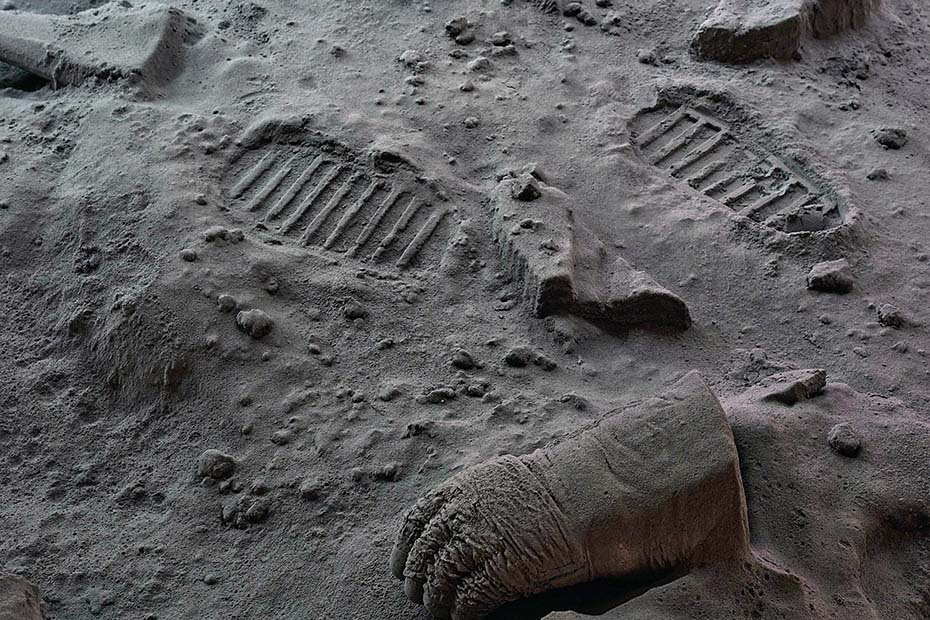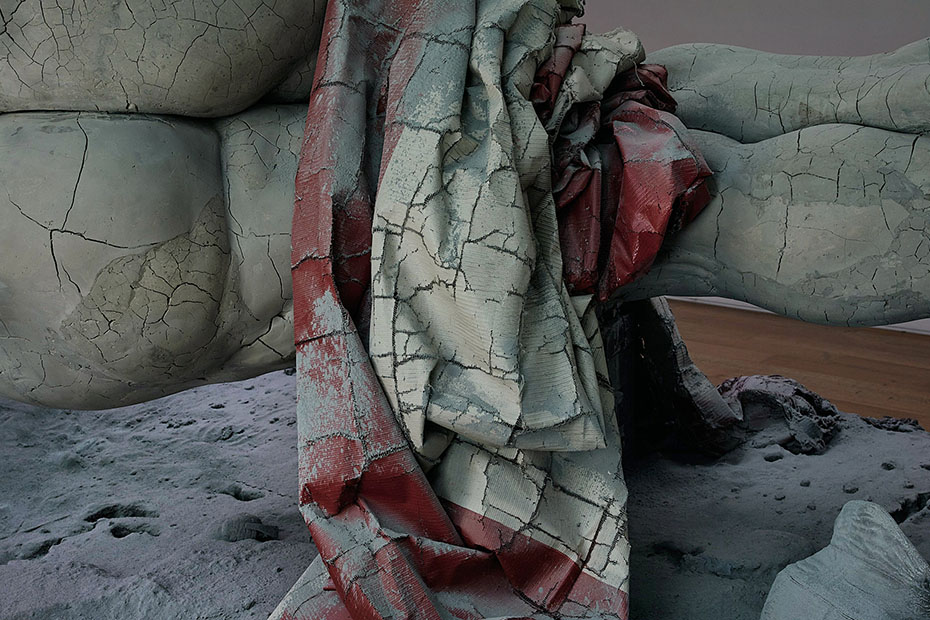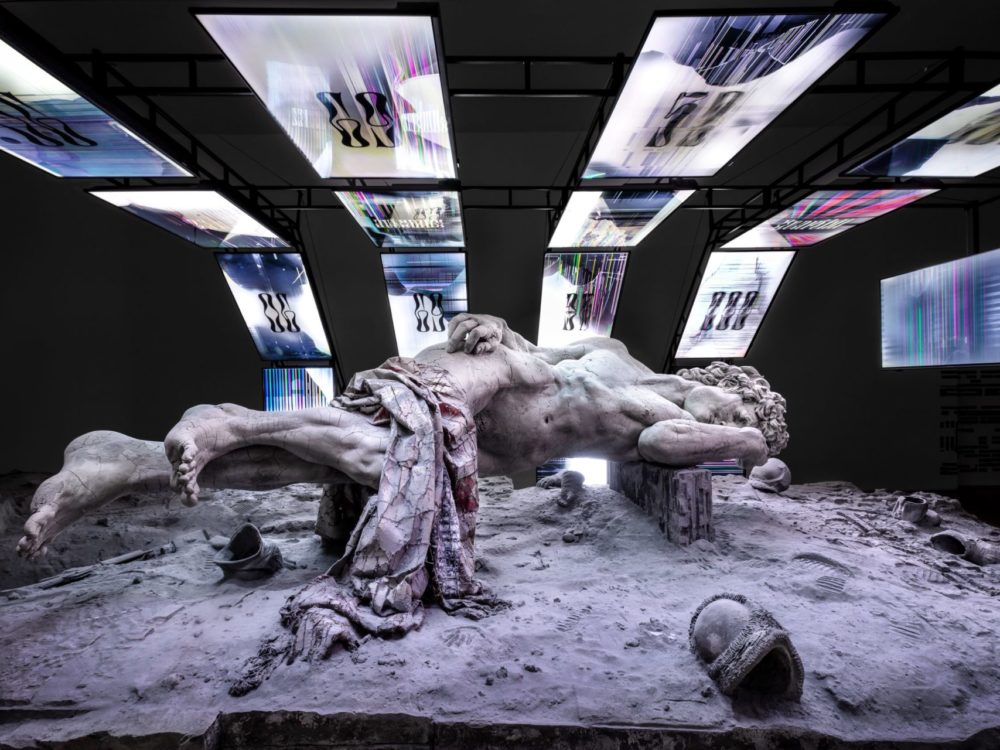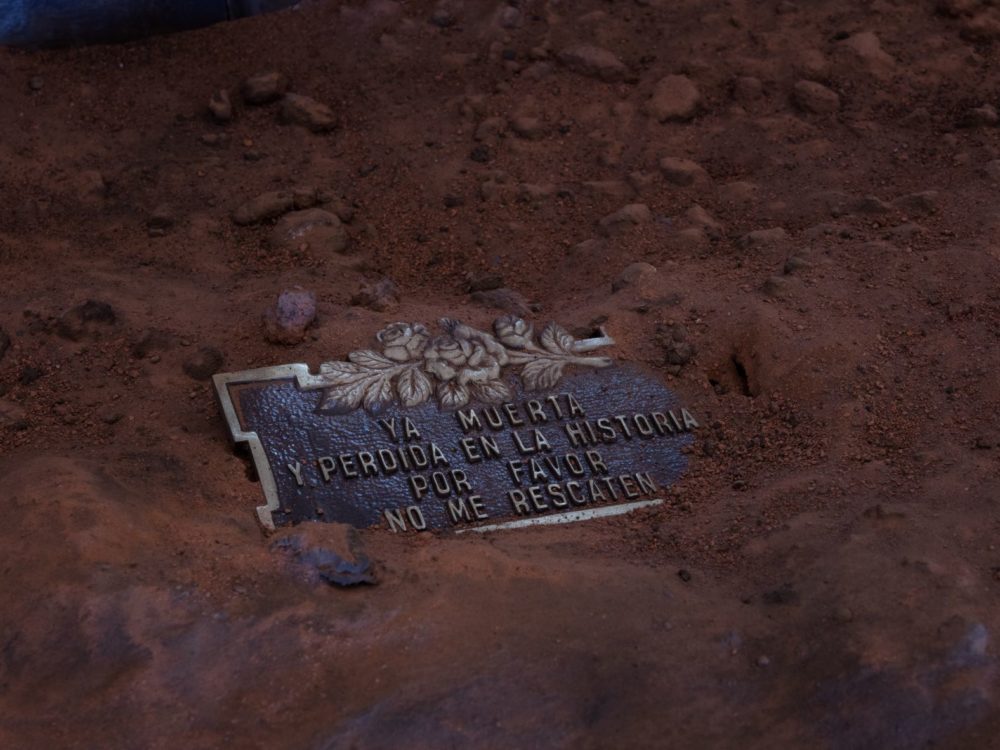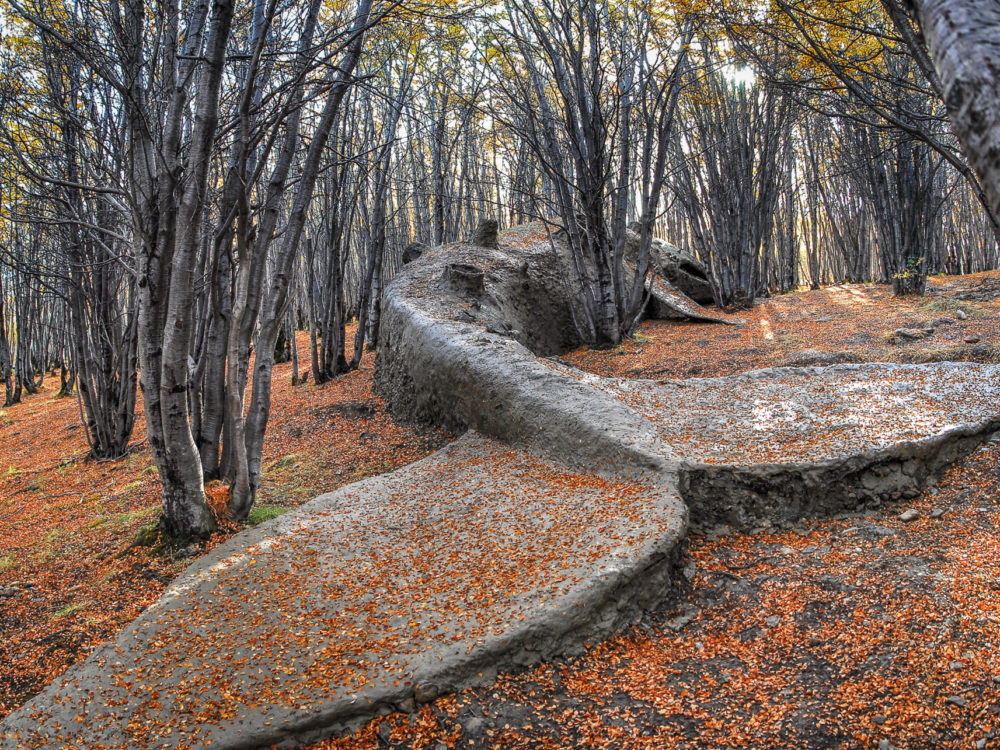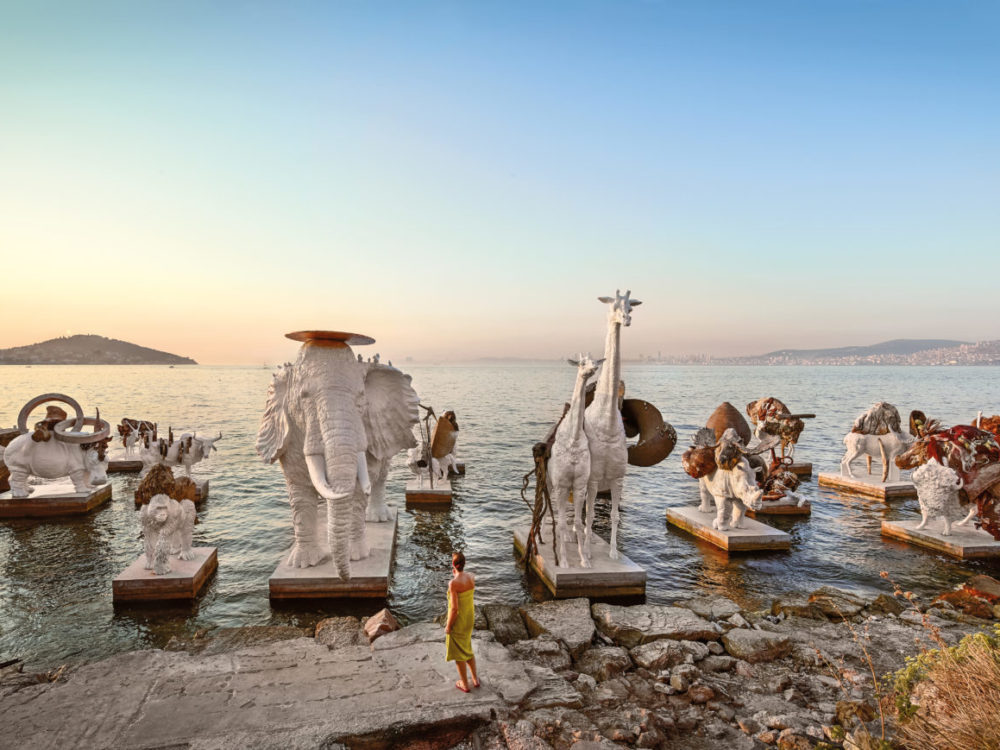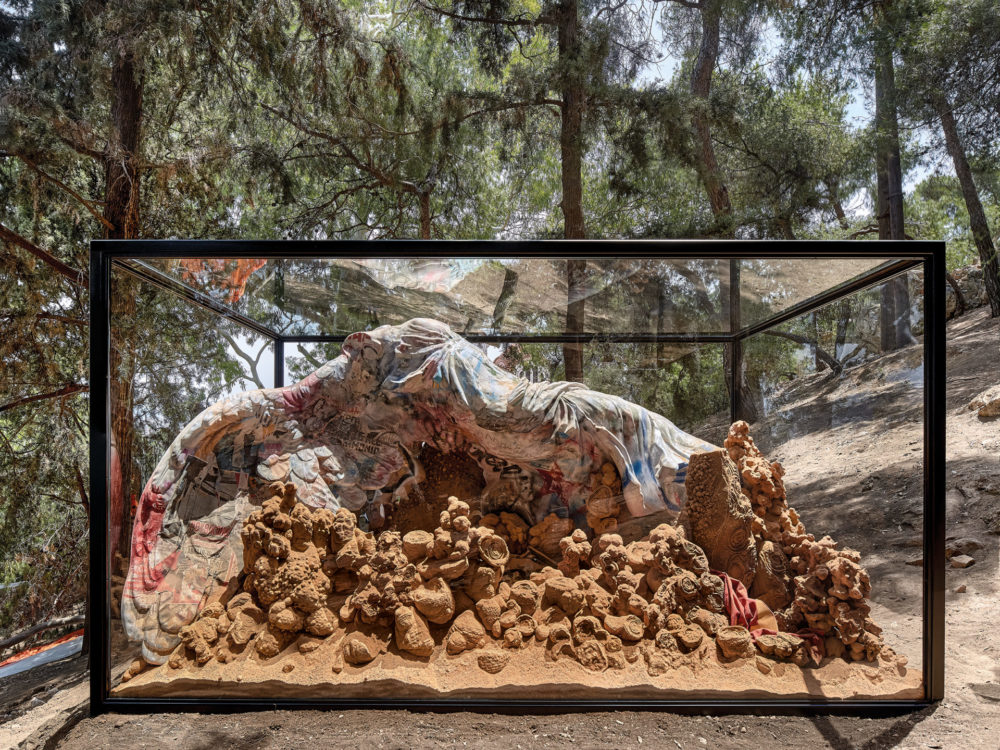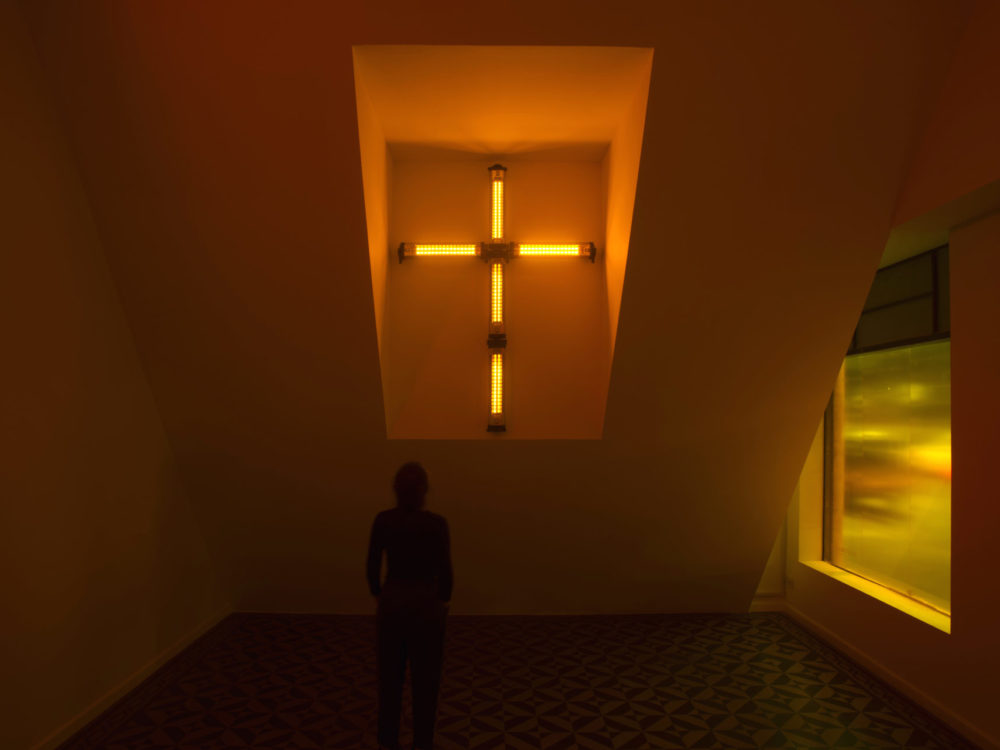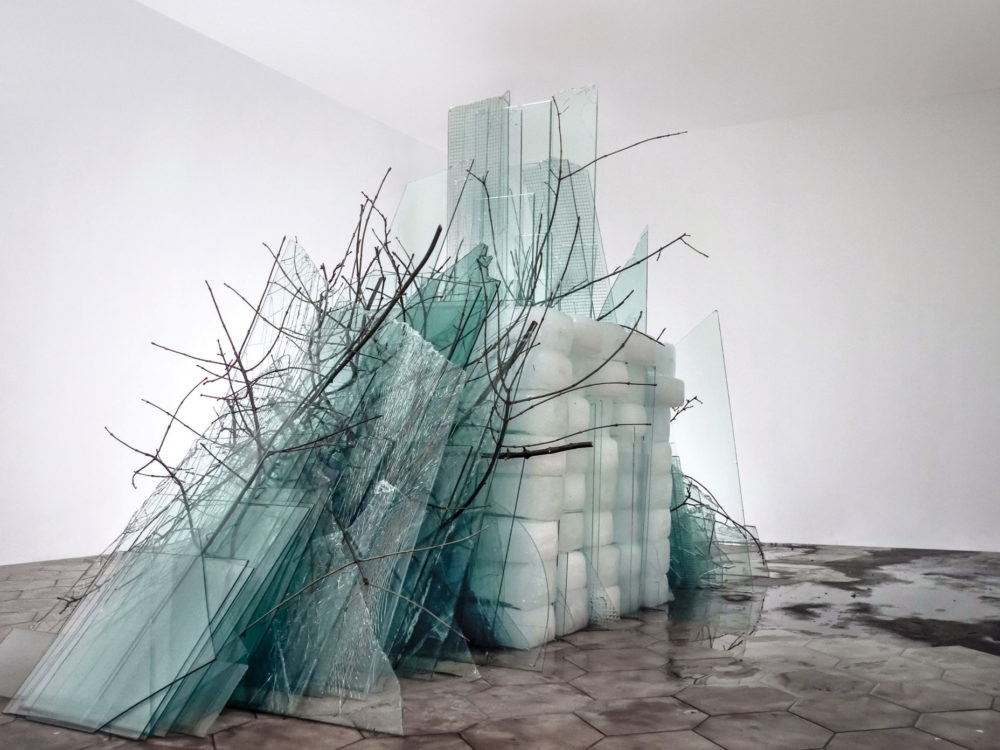ADRIÁN VILLAR ROJAS WITH MARIANA TELLERIA
EL FIN DE LA IMAGINACIÓN
El fin de la imaginación comprises site-specific installations and sculptures by Adrián Villar Rojas, and newly contextualized presentations of clay works from his archive. The installation includes two sculptures by Argentinian artist Mariana Telleria who joins him with two works that challenge contemporary notions of monuments and memorials. The exhibition invites viewers to be explorers of the unpredictable microcosmos while probing existential questions related to the temporality of humanity and the ephemerality of nature.
ABOUT THE EXHIBITION
Adrián Villar Rojas (Rosario, Argentina,1980) conceives long term projects, collectively and collaboratively produced that take the shape of large-scale and site-specific environments, both imposing and fragile, leaving scarce traces of their passage through the world due to perishing materiality and parasitical integration. Within his research and worldbuilding, which mixes sculpture, drawing, video, literature and performative traces, the artist explores the conditions of a humanity at risk, on the verge of extinction or already extinct, in which he traces the multi-species boundaries of a post-anthropocene time folded in on itself.
In El fin de la imaginación, a newly commissioned installation for The Bass Museum of Art, Villar Rojas wonders how the Moon, Mars, or any other extraterrestrial landscapes brought to us by interplanetary conquest will affect our past, present and future monumentality and its memorialization.
What will happen when our terrestrial fictions, the ones that cement nations and identities, travel to outer space? Will the stories of the Greco-Latin gods, of European Empires, of Spanish Conquistadors, or even of the United States itself, survive as we know them, as we shaped them in books, museums, anthems and monuments, or will they mutate with the radical change of context? And what will happen with the new stories to come, the ones needed to build the first communes that will inhabit planets? How will political fiction be or behave in this expanded space-time travel to come? How will past and future stories evolve or mutate? Will they lose their ‘original’ meaning and function as space colonization goes over centuries and territories? Just as the monuments to the invaders of the Americas: Cristoforo Colombo, Hernán Cortez, Francisco Pizarro shifted their social meaning from cohesion to rejection, and their symbolic function from glorification of a discovery to testimony of a genocide? Will that day come when we see the oppressed of the future rising against the official stories, occupying and re-signifying the monuments of humanity’s space conquest?
Villar Rojas asks if one of these future monuments might be the Moon itself, with all the physicality and memory of humanity’s attempted interplanetary endeavors imprinted on its lunar soil, or if it already is a museum of such conquests. After all, the airless atmosphere turns the celestial body into a freezer, so unless struck by a meteorite, each boot print, rover track, crashed satellite, television equipment, and flagpole will remain there in perpetuity, these silent, still objects, are forever lying in its dust exactly as they were. With its lack of legal jurisdictions or environmental hazards, the Moon is the utmost preservation device: the Solar System’s ultimate anti-entropy chamber.
Just as the market price of gold, or any other precious heavy metal, would fall dramatically if mining corporations were able to ship a three-billion-dollar gold, copper, iron or lithium asteroid to the Earth, thus triggering an authentic revolution, or even a catastrophe, in the world economy, Villar Rojas’ hypothesis is that colonization of space and celestial bodies will trigger a multidimensional epistemic reaction chain in our way to understand the past, present and future of our memorialization practices, as well as to produce new ones in this amplified context.
Is humanity in a terminal crisis or in an era of light-speed revolutions? Perhaps, as in quantum mechanics, in both processes at the same time.
ABOUT ADRIÁN VILLAR ROJAS
Adrián Villar Rojas was born in Rosario, Argentina in 1980. He lives and works nomadically. Villar Rojas has been the recipient of numerous awards including Sharjah Biennial Prize, awarded by the Sharjah Art Foundation (2015), The Zurich Art Prize at the Museum Haus Konstruktiv (2013); the 9th Benesse Prize in the 54th Venice Biennale, (2011); the Nuevo Banco de Santa Fe Scholarship for Young Artists (2006); and the first prize in the Bienal Nacional de Arte de Bahía Blanca at the Contemporary Art Museum of Bahía Blanca, Argentina (2005). In 2020 he was nominated for the Hugo Boss Prize.
Recent solo exhibitions have been shown at the Tank Shanghai, China (2019); the Art Gallery of Ontario, Canada (2018); The Geffen Contemporary at MOCA, Los Angeles (2017); NEON Foundation at Athens National Observatory, Athens (2017); Kunsthaus Bregenz, Bregenz (2017) and The Metropolitan Museum of Art, New York (2017); the Moderna Museet, Sweden (2015); the Serpentine Gallery, London (2013); the Museum Haus Konstruktiv, Zurich, Switzerland (2013); and the Musée de Louvre, Paris (2011).
Participation in international group exhibitions include the Gwangju Biennale, South Korea (2018); 14th Istanbul Biennial, Istanbul (2015); 12th Bienal de La Habana, La Habana (2015); Sharjah Biennial 12, Kalba (2015); dOCUMENTA (13), Kassel and Kabul (2012) and 54th International Art Exhibition: La Biennale di Venezia, Argentina’s National Pavilion, Venice (2011).
ABOUT MARIANA TELLERIA
Mariana Telleria was born in Rufino, Argentina in 1979. She lives and works in Rosario, Argentina. Telleria has been the recipient of numerous awards such as LXV Salón Nacional de Rosario 2nd Adquisition Award (2011), the Fondo Nacional de las Artes Scholarship for Artists (2009) and Nuevo Banco de Santa Fe Scholarship for Artists (2006 and 2007).
Recent solo exhibitions have been shown at Ruth Benzacar Galería de Arte, Buenos Aires (2018); Espacio Californio, Buenos Aires (2017); Universidad Nacional de La Plata, Argentina (2015); Galería Alberto Sendrós, Buenos Aires (2009 and 2011); MAMBA, Museo de Arte Moderno de Buenos Aires (2011) and Museo de Arte Contemporáneo de Rosario, Argentina (2007).
Participation in group exhibitions include 58th International Art Exhibition: La Biennale di Venezia, Argentina’s National Pavilion, Venice (2019); MUNTREF Museo de Arte, Buenos Aires (2017 and 2018); Museo de Arte Contemporáneo de Montevideo, Uruguay (2017); Boghossian Foundation, Brussels (2016); Mana Contemporary, Jersey (2015); Museo Municipal de Arte Moderno, Cuenca (2015); Museo Municipal de Bellas Artes Juan B. Castagnino Rosario (2014); Marian Goodman Gallery, Nueva York (2014); Galerie Xippas, Paris (2014); New Museum Triennial 2012, Nueva York (2012); Plataforma Bogotá, Colombia (2012); and Museo Municipal de Bellas Artes Juan B. Castagnino, Rosario (2011).
